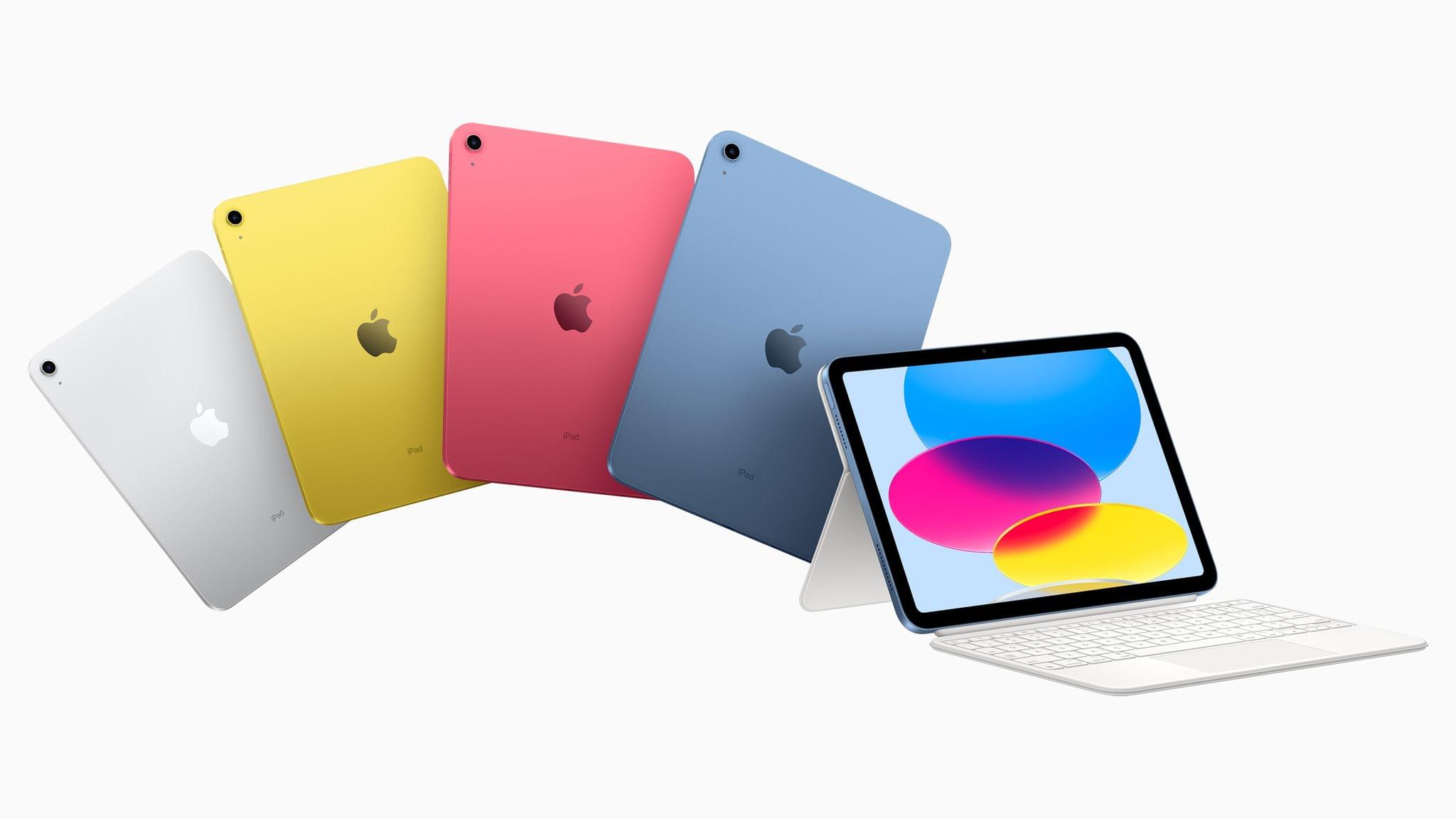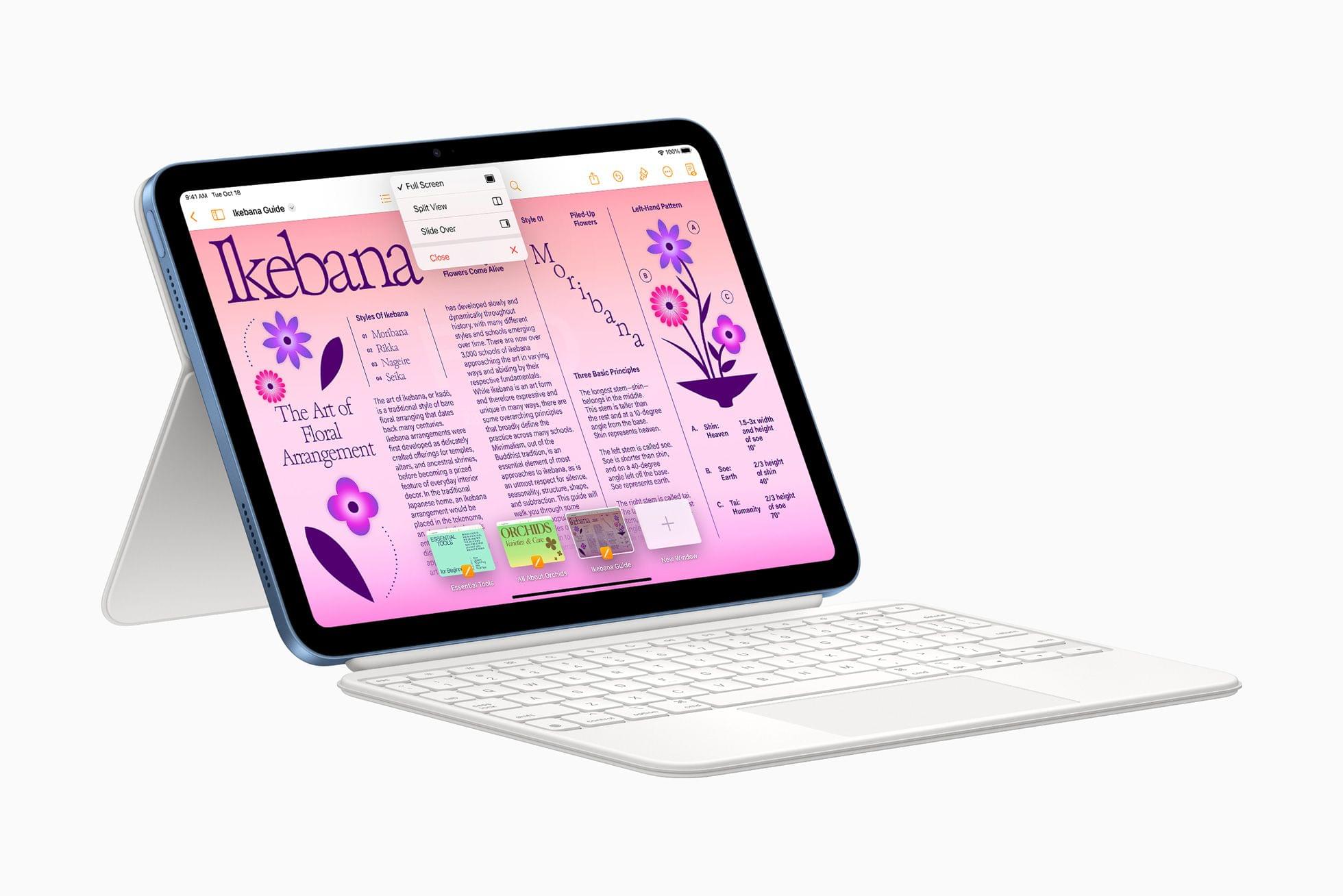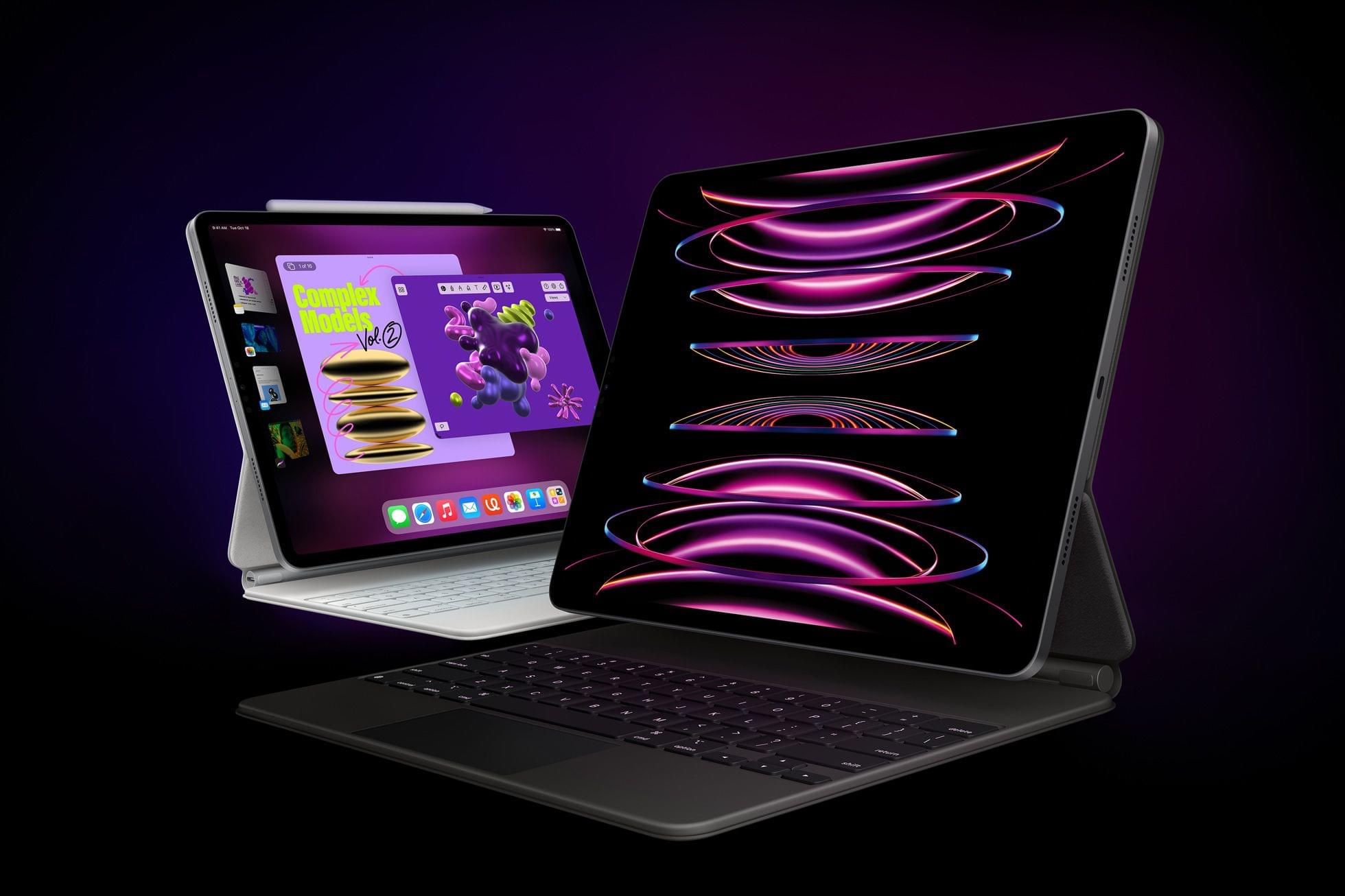This morning Apple announced their all-new iPad and iPad Pro lineups via press release and a short announcement video. The new iPad (non-Pro) features new colors and an updated square-edge design that brings it in line with the rest of Apple’s modern iPads and iPhones. The iPad Pro has been upgraded to Apple’s M2 chip, and supports a new “hover” mode on the Apple Pencil. Apple also unveiled a new Magic Keyboard Folio accessory, which includes a detachable keyboard with a trackpad and function keys.
There’s a lot to like about each of these new products, but the details reveal some very strange decisions on Apple’s part.
The 10th Generation iPad
The new 10th generation standard iPad is the last device in the iPad product line to be updated to the modern square-edged case design. However, unlike every other iPad with the new design, the new model does not support the magnetically-connected Apple Pencil 2. The 10th gen has also ditched its Lightning connector in favor of USB-C, which is a nice improvement for everyone except Apple Pencil users.
The Apple Pencil and the New iPad
The original Apple Pencil (which has not been updated today, and is the only Pencil that the new iPad supports) still only charges via its male Lightning connector. On prior iPad models, the Pencil could be conveniently (albeit awkwardly) plugged into the iPad itself to charge. But because the 10th gen iPad has switched to USB-C, users no longer have any convenient charging method.
To handle this unfortunate turn of events, Apple is also releasing a $9 “USB-C to Apple Pencil” adaptor. So the new iPad-to-Pencil charging story is to plug a USB-C to USB-C cable into your iPad, plug the new dongle into the USB-C cable, and then plug your original Apple Pencil into the dongle. This may look less awkward than the old way, but I don’t think it’s an improvement.
The old way was bad but at least the new way is bad pic.twitter.com/mLp2B1ANy1
— Alex Guyot (@_alexguyot) October 18, 2022
Weirdness with the Apple Pencil connection is probably not a good reason for Apple to delay switching to USB-C on this iPad, but the obvious solution was to add support for the Apple Pencil 2 (just like they did on last year’s excellent iPad mini). While the situation is not great, Apple will at least be including the new USB-C to Apple Pencil adaptor in the box for any new purchasers of the 1st generation Pencil.1
One potential explanation for the lack of Pencil 2 support is that the landscape edge of the device — where the 2nd generation Apple Pencil magnetically connects on other iPad models — has a new addition in the exact location where that connector would otherwise go.
Landscape Camera
In a unique tweak for a redesign that is otherwise similar to its siblings, Apple has moved the front-facing camera to the landscape edge on the new iPad. This is something that iPad users have been clamoring for for years, and it’s good to see Apple finally making it happen. The bad news: this very nice new change is only coming to the non-Pro models. The camera on the new iPad Pros remains on the portrait edge.
Details
While the 10th generation iPad is not getting upgraded to the M-series chips, it is seeing a spec bump to the A14 Bionic. This is the same chip family that debuted in the iPhone 12, so it’s a solid, fairly modern processor (the 9th generation iPad used the A13 Bionic chip).
The new iPad features a 10.9-inch Liquid Retina display with True Tone, an updated 12MP back camera which can shoot 4K video, an Ultra Wide 12MP front camera with support for Center Stage, Wi-Fi 6, and 5G on cellular models. The device can be unlocked using Touch ID via the top button — the same spot that it is located on the iPad Air and iPad mini.
The 10th generation iPad is available to order today, with a starting price of $449 ($599 for cellular). It comes in four bright finishes: blue, pink, yellow, and silver.
The Magic Keyboard Folio
Apple has also introduced an all-new keyboard accessory alongside the 10th-generation iPad. The Magic Keyboard Folio is a two-piece magnetic cover. The back piece can be folded outward to create an adjustable stand for the iPad, and the front piece is a full-size keyboard with a trackpad and a row of function keys.
This keyboard looks incredible. The keys and trackpad have a lot more room to breathe in this design than they do in Apple’s similar Magic Keyboard for iPad Pro. Adding a function key row is fantastic, and the ability to easily detach it will hopefully make the whole rig feel less clunky than the Magic Keyboard. Color-wise, the accessory only comes in white for now.
The Magic Keyboard Folio is available now for $249. Before you run and buy it immediately though, there’s unfortunately another huge caveat to this product announcement: the Magic Keyboard Folio only supports the new 10th generation non-Pro iPad.
That’s right, this all-new, extremely cool accessory is not supported by the new iPad Pro models, which were also released at the same time today. I’m not quite sure what Apple is thinking here, but it definitely feels bad for fans of Apple’s highest end iPad to be walled off from its most interesting new accessory.
The 6th Generation iPad Pro
Also announced today are the latest generation of iPad Pro. The new models come in the usual 11- and 12.9-inch size classes, and have now been upgraded to Apple’s M2 processors. The new chips enable these devices to capture ProRes video, and to support a new “Apple Pencil hover experience”.
The latter is an all-new feature for the second-generation Apple Pencil which allows iPads to sense the Pencil’s location up to 12mm above the display. The iPad software has been updated to support hover states when this occurs, causing the interface item that is being hovered to expand or otherwise change in preparation of an impending touch. The feature looks impressive in Apple’s announcement video, and I’m excited to see how it works in practice once people get their hands on these devices.
Finally, the new iPad Pro models have been upgraded to support Wi-Fi 6E, enabling up to 2x faster download speeds than the previous generation model. You’ll have to have a fast enough internet plan and Wi-Fi equipment capable of handling this to take advantage of it, of course.
The new iPad Pro models are available to order today, with the 11-inch model starting at $799 ($999 for cellular) and the 12-inch model starting at $1,099 ($1,299 for cellular).
This Lineup is Super Weird
As you’ve probably noticed from the many caveats throughout this article, this iPad lineup has some issues. I’m not sure how this happened, but somehow these product lines just seem all mixed up. The lowest-end iPad (not counting the previous 9th generation iPad, which is currently still for sale) has features that the iPad Pro does not. It also has the same design as all of the other iPads, yet lacks the Apple Pencil 2 support which can be found in the rest of them. The brand-new iPad Pro models do not work with the most feature-rich iPad keyboard that Apple sells. That keyboard costs a full half of the base price of the only iPad that supports it.
Hopefully Apple will fix some of these issues in the next models, but for now they’ve left us with a very muddled and confusing iPad product line. We’re sure to be stuck with most of this for at least a year, but I really hope that we see a version of the Magic Keyboard Folio for the iPad Pro before that. The least Apple can do is make sure they’re furnishing their most dedicated iPad users with their most interesting accessories.
- Amusingly, this means that the 1st generation Apple Pencil will now be shipping with two adaptors in the box: the new USB-C to Apple Pencil adaptor and the old female-to-female Lightning adaptor which has always been included to allow wired charging of the Apple Pencil. ↩︎





